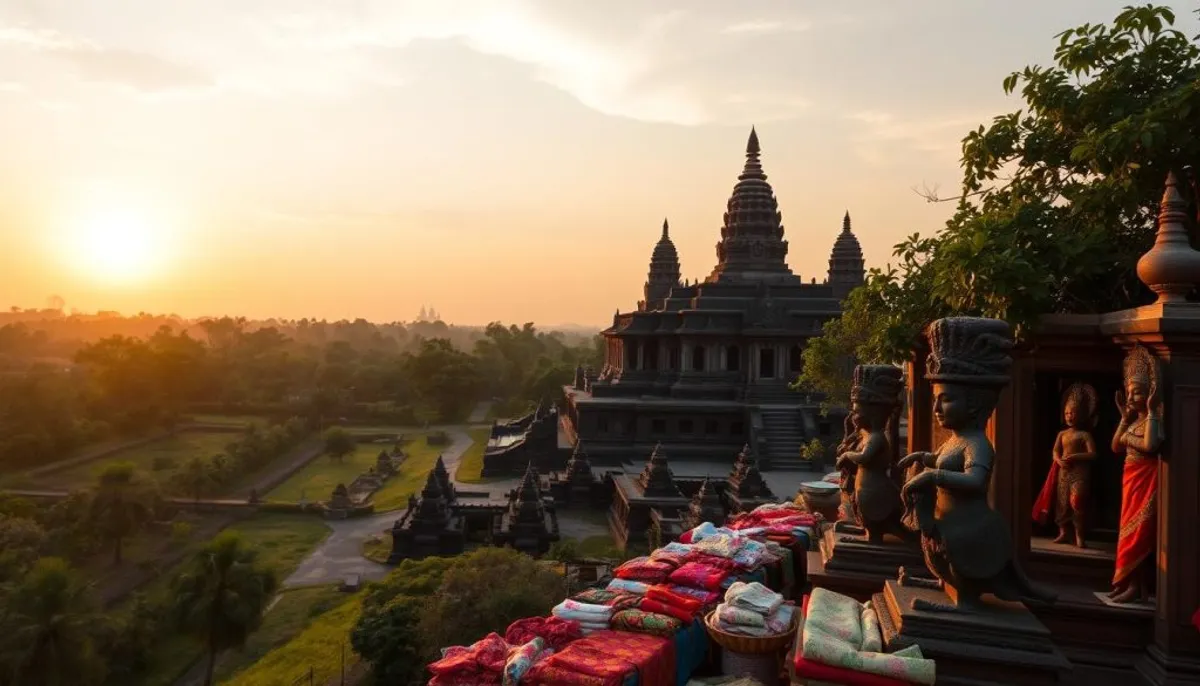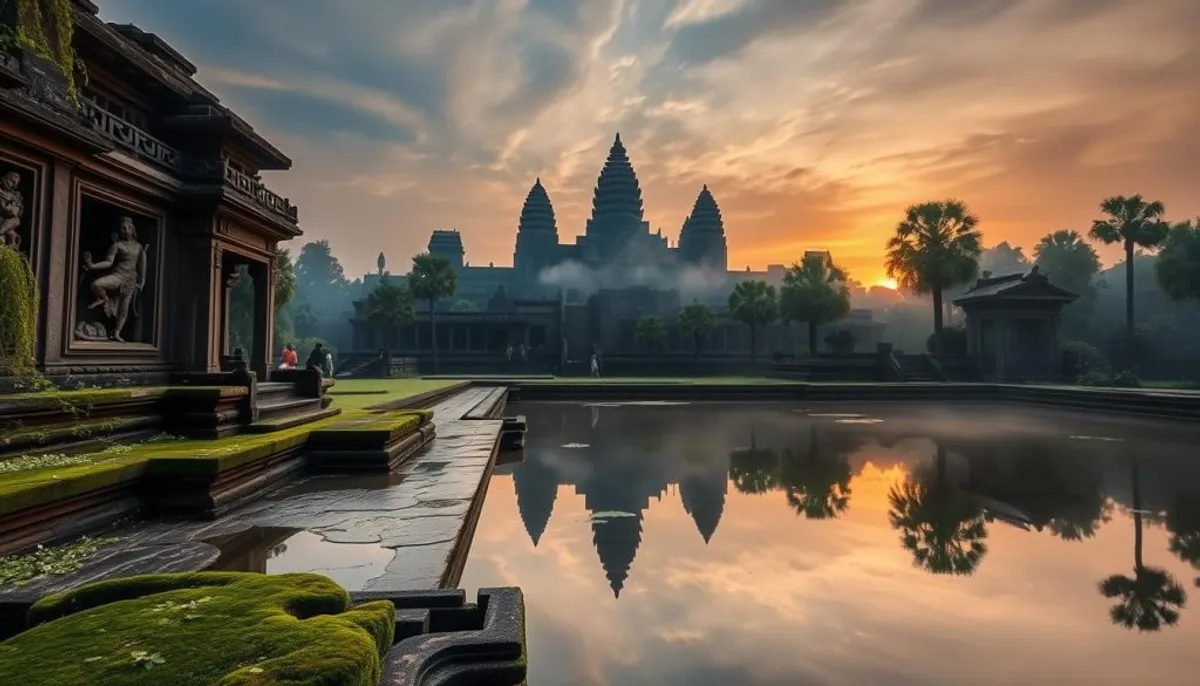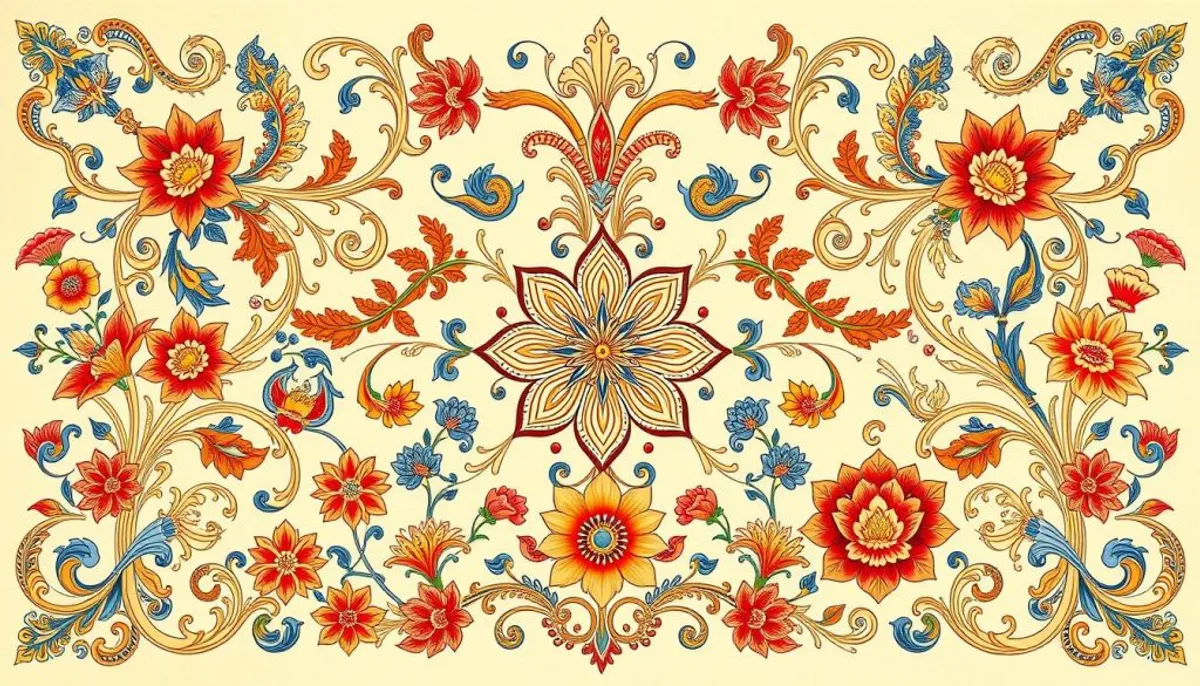Cambodia, a treasure of Southeast Asia, stands out for its cultural heritage of great value. This country, home to 16.6 million inhabitants, is the cradle of a millennia-old Khmer tradition. Its fascinating heritage attracts visitors from all over the world.
The Khmer civilization has profoundly marked this country. From the temples of Angkor to the exquisite flavors of its cuisine, every aspect of Cambodian culture is a story to tell. Local craftsmanship, for example, is remarkably fine.

Buddhism plays a central role in Cambodian society. It permeates the daily lives of the inhabitants, shaping their identity. The country is proud of its three UNESCO sites: Angkor, Preah Vihear, and Sambor Prei Kuk.
Let’s explore Khmer culture together. Every discovery promises to be a memorable adventure.
The millennia-old history and traditions of the Cambodian people
The Khmer Empire, established in the 9th century, shaped Cambodian identity. This civilization left a cultural legacy deeply rooted in Khmer customs.
The origins of the Khmer civilization
The Khmer people, making up 90% of the population, established a powerful empire. The Khmer language, used for over 1500 years, illustrates this cultural continuity. The peak of the empire, marked by the construction of Angkor, remains a symbol of national pride.

The influence of Buddhism in society
Buddhism in Cambodia is a pillar of society, with 95% of the population practicing Theravada Buddhism. This religion shapes the values, traditions, and lifestyle of Cambodians, highlighting the importance of traditions. The Buddhist New Year, Chaul Chnam Thmey, is the most important celebration in the country.
The role of monasteries and monks in daily life
Cambodian monks play a central role in preserving traditions. At dawn, they can be seen in the streets of Phnom Penh, asking for alms. Monasteries are places of learning and transmission of Buddhist values, contributing to keeping Khmer customs alive.
| Cultural Aspect | Percentage |
|---|---|
| Khmer Population | 90% |
| Buddhism Practitioners | 95% |
| Importance of the Role of Monks | Very High |
Khmer culture through art and craftsmanship
Khmer art stands out for its precision and originality. Cambodian craftsmanship is rich with treasures that reflect ancestral know-how, despite historical challenges.
Khmer ornamentations and the Kbach style
The Kbach style, emblematic of Khmer art, is characterized by delicate and complex patterns. These ornamentations are found on textiles, notably the "krama" scarves, symbols of Cambodian identity. The "ikats," hand-dyed fabrics, demonstrate the artisans' mastery in the art of weaving.

The sculpture and bas-reliefs of Angkor
The bas-reliefs of Angkor are masterpieces of Khmer art. They adorn the temples and tell the story and myths of the Khmer civilization. Stone and wood carving remains a vibrant tradition, perpetuated by talented artisans.
The traditional work of silk and wood
Silk occupies a central place in Cambodian craftsmanship. Weaving techniques are passed down from generation to generation. Woodwork is also an integral part of Khmer art. From traditional houses to sculptures, wood is shaped with expertise.
| Art Form | Characteristics | Materials |
|---|---|---|
| Weaving | Complex patterns, hand-dyeing | Silk, cotton |
| Sculpture | Bas-reliefs, statues | Stone, wood |
| Jewelry | Traditional patterns, unique pieces | Silver |
| Pottery | Elegant shapes, ancestral techniques | Clay |
Cambodian gastronomy: a unique culinary heritage
Cambodian cuisine stands out for its palette of exquisite flavors, reflecting a rich culinary heritage. Khmer rice, several times awarded the best rice in the world, occupies a central place in this ancestral gastronomy. Local spices, such as Kampot pepper, give unmatched authenticity to traditional dishes while highlighting local craftsmanship.
The rice and emblematic spices
Cambodian jasmine rice forms the basis of many meals. It pairs ideally with spicy curries and fragrant soups. The Kampot pepper, recognized internationally, subtly enhances the flavors of meats and seafood.
The local specialties and fish from Tonle Sap
Amok, the national dish, illustrates the richness of Cambodian cuisine. This fish curry steamed in banana leaves skillfully blends the flavors of coconut, lemongrass, and galangal. The fish from Tonle Sap, a symbol of the country, plays a key role in many local recipes.
Exotic fruits and street food
Cambodian markets are filled with colorful and fragrant tropical fruits. Street food, omnipresent, offers a variety of tasty snacks, such as kdam chaa (fried crab) or bai sach chrouk (grilled pork with rice). Traditional desserts, such as ansoamchek, complete this unique culinary experience.
Cambodian gastronomy, rich in flavors and traditions, invites a true culinary journey into the heart of Southeast Asia.
Must-see cultural sites in Cambodia
Cambodia is a cultural goldmine, home to ancient temples and spectacular natural landscapes. This Southeast Asian country offers an unforgettable adventure to all who visit.
The UNESCO-listed temples of Angkor
The temples of Angkor, a treasure of UNESCO heritage, span 400 km². Among them, Angkor Wat, famous for its beauty, attracts thousands of visitors each year. The Preah Vihear temple, dating back to the 11th century, was added to the World Heritage list in 2008.
The colonial charm of Phnom Penh
Phnom Penh, the capital, is a blend of colonial architecture and modernity. The Royal Palace and the Silver Pagoda illustrate its rich past. The city also houses major historical sites, such as Choeung Ek, where 8,895 bodies were found, evoking the Khmer Rouge period.
The islands and natural reserves
The Cambodian islands are natural paradises. Ream National Park is home to rare species such as turtles and dugongs. For those seeking adventures, Virachey National Park offers three ecotourism hikes in the heart of diverse wildlife.
| Site | Characteristic | Interest |
|---|---|---|
| Angkor Wat | Largest religious monument in the world | Khmer architecture |
| Phnom Penh | Capital of Cambodia | Colonial and modern blend |
| Koh Rong | Paradise island | White sandy beaches |
| Kep National Park | Hiking trails | Coastal views |
Conclusion
Cambodia stands out for its remarkable fusion of its millennia-old past and contemporary dynamism. The Angkor period, which spans from 802 to 1432, was the golden age of Khmer creativity, particularly in architecture and sculpture. Despite centuries of turmoil, the country has managed to preserve and revitalize its artistic traditions.
The Khmer culture, deeply rooted in Theravada Buddhism, is practiced by 90% of the population. This culture manifests in all aspects of daily life. Unique festivals like the Khmer New Year in April and classical Apsara dances enrich the cultural experience. This makes the discovery of Asia an adventure full of emotions.
A trip to Cambodia is an immersion in this fascinating culture. From the temples of Angkor to traditional stilt houses, through local gastronomy, each experience offers an authentic insight into Khmer life. Despite challenges, including the education of girls, Cambodia is moving towards the future while preserving its unique heritage.
RelatedRelated articles


